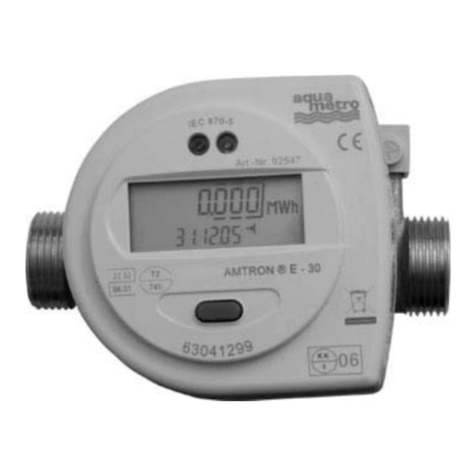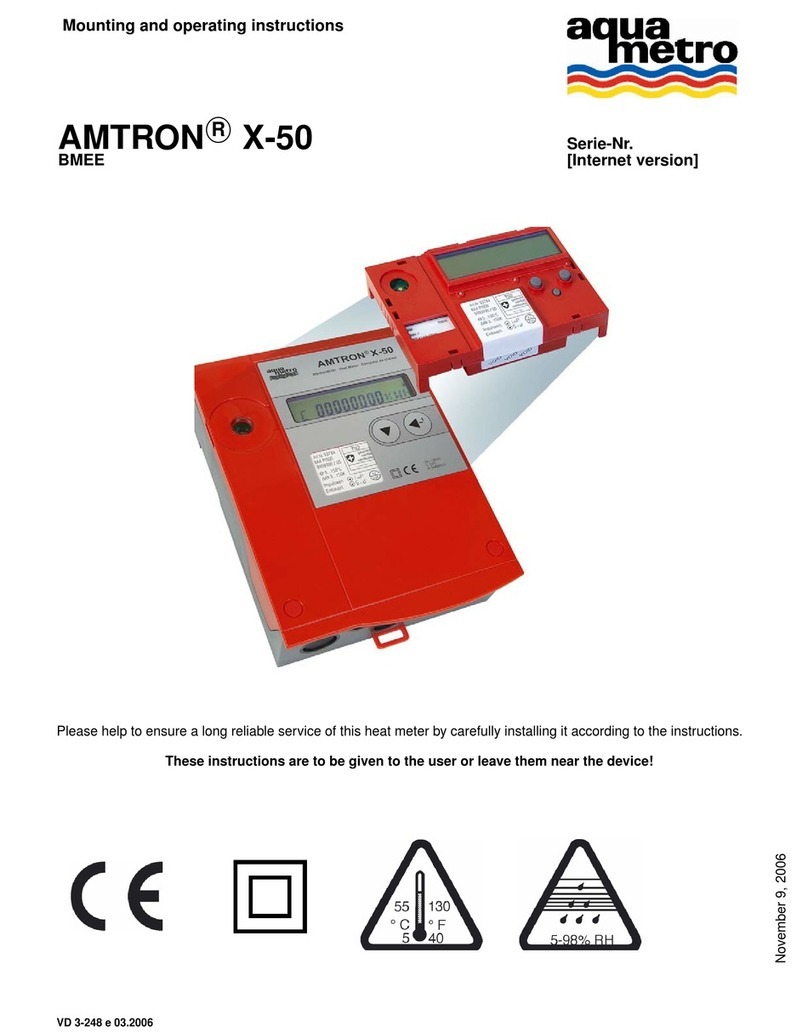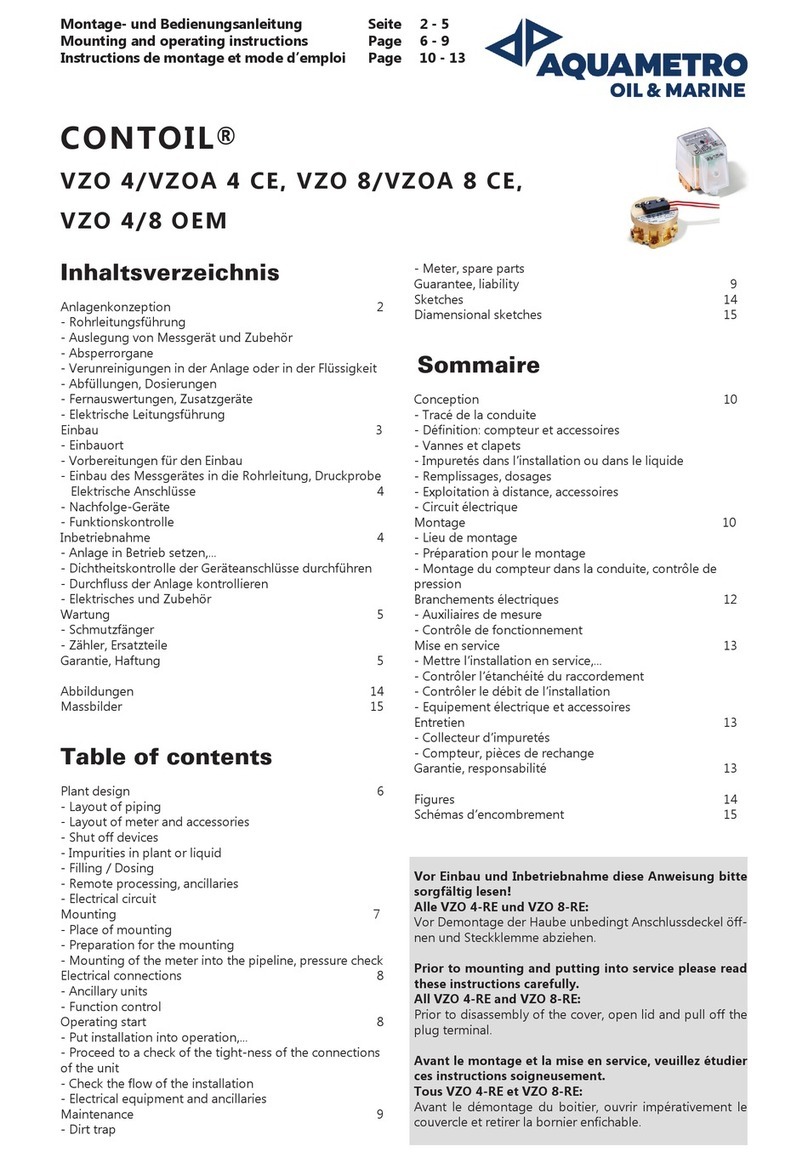8CONTOIL
®
DFM
9. Input Value and Output Value
Change the “Input Value” by doing the following:
a. Press the down-arrow
b. On the “Input” line press <OK>
c. The field “Input xxxx.x ml” will by highlighted.
d. Press the down-arrow or the up-arrow to adjust the “Input Value” according to the table “Sensor Type”
e. Press <OK> to confirm the modification.
f. The “Output Value” can be chosen from the “Sensor Type” table or set a value of your choice.
Sensor Type Input Value
DFM-8S 12.5 ml
DFM-20S 36 ml
DFM-25S 100 ml
10. Set the Return Line Sensor
a. Press the down-arrow to move to the <RL Sensor> line.
b. This value must be <No>. If it is not, press the <OK> key and change the value with the arrows key.
11. Set the <SL KF> and the <SL app>.
a. Starting from the previous position, press many time the down-arrow, until you reach the menu point “Supply
configuration”.
b. Press <OK> at the menu point “SL KF”. Enter the value for the <SL KF> using the arrow keys.This value is prin-
ted on the type plate of the flow meter. Confirm with <OK>.
c. Move with <OK> to the menu point <SL app>. Normaly you do not need to change this value. For more infor-
mation go to the section <Higher Performance Results>
d. Press many times the down-arrow key until you reach the menu point “Return configuration”.
e. Press <OK> at the menu point “RL KF”. Enter the value for the <RL KF> using the arrow keys. This value is prin-
ted on the type plate of the flow meter. Confirm with <OK>.
f. Move with <OK> to the menu point <SL app>. Normaly you do not need to change this value. For more infor-
mation go to the section <Higher Performance Results>
12. Set the date
a. Starting from the previous position, press many time the down-arrow, until you reach the menu point “Clock”.
b. On the line “Date”, press <OK>. Modify the date by using the down-arrow or the up-arrow. Move from
left to right with the <OK> key and from right to left with the <ESC> key.
c. When the date is set, confirm it with the <OK> key.
13. Set the time
a. Move with the down-arrow key to the line “Time”.
b. On the line “Time”, press <OK>. Modify the time by using the down-arrow or the up-arrow. Move from
left to right with the <OK> key and from right to left with the <ESC> key.
c. When the time is set, confirm it with the <OK> key.
14. Set the Service code
This procedure is optional. We recommend changing for more security.
Store the new service code in a save place. Loosing of the service code leads to a “factory reset”, which means
sending the DFM-BC to the factory with loosing of all setting parameters. So, be careful.
a. Move with the down-arrow key to the line “Service code”.
b. On the line “Service code”, press <OK>. Modify the service code by using the down-arrow or the
up-arrow. Move from left to right with the <OK> key and from right to left with the <ESC> key.
c. When the new service code is set, confirm it with the <OK> key.
15. End of installation
a. Exit with <ESC>.
b. After the installation is done and before you start the engine, go to the section “Startup (commissioning)” for
the initial checks and startup.
Board Computer (DFM-BC) to a Fleet Manager or GPS Tracking System
For an easier reading during this section the Fleet Manager or the GPS Tracking-System
are called Auxiliary.
This configuration allows you to send the exactly calculated consumption amount to an external device (e.g., Fleet Ma-
nager or GPS Tracking System). In order to work, a flow meter with the correct “Output Value” must be installed on the
DFM-BC




































